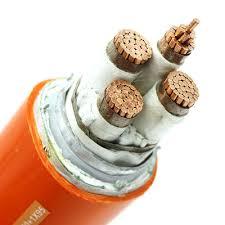b230 standardThe structural elements of wire and cable products can generally be divided into four main structural components: wire, insulation layer, shielding and protective layer, as well as filling elements and tensile elements. According to the requirements and applications of the product, some products have a very simple structure, with only one structure of wires, such as overhead bare wires, catenary wires, copper and aluminum busbars (bus bars), etc.; the external electrical insulation of these products depends on installation and laying Use insulators and space distance (that is, use air insulation) to ensure.The vast majority of wire and cable products are products with the same cross-section (cross-section) shape (ignoring the errors caused by manufacturing) and elongated products. This is because they are used as features to form circuits or coils in systems or equipment. Decided. Therefore, to study and analyze the structural composition of cable products, only need to observe and analyze from its cross section.

1. Lead wire Lead wire is the most basic and essential main component for the product to carry out electric current or electromagnetic wave information transmission function. Wire is the abbreviation of conductive core, made of copper, aluminum and other non-ferrous metals with excellent conductivity. The optical fiber aerial bundled cables ASTM b230 standard used in the optical communication network, which have developed rapidly in the past 30 years, use optical fibers as wires.
2. Insulation layer is a component that is wrapped around the periphery of the wire and plays an electrical insulation role. That is to say, it can ensure that the transmitted current, electromagnetic waves, and light waves only travel along the wires and do not flow to the outside. The potential on the conductors (that is, the potential difference formed to the surrounding objects, that is, the voltage) can be isolated, that is, the normal transmission of the wires must be ensured Function, but also to ensure the safety of external objects and people. Wire and insulation are the two basic components that must be equipped to form cable products (except bare wires).
3. Protective layer When wire and cable products are installed and operated in various environments, they must have a component that protects the product as a whole, especially the insulating layer, which is the protective layer.
Because insulating materials are required to have excellent various electrical insulating properties, they must have extremely high purity and minimal impurity content; often they cannot take into account their ability to protect the outside world. Therefore, for the outside world (that is, installation, use occasions and in-use ) The endurance or resistance of various mechanical forces, the resistance to atmospheric environment, the resistance to chemicals or oils, the prevention of biological damage, and the reduction of fire hazards must be borne by various protective layer structures.
Many aerial bundled cable NFC 33-209 products dedicated to a good external environment (such as a clean, dry, and non-mechanical external room), or products with a certain mechanical strength and weather resistance of the insulation material itself, can be without the protective layer. .
